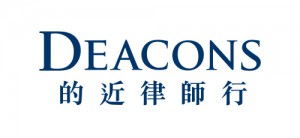7 May 2020
Introduction
On April 29, 2020, the Hong Kong Competition Tribunal (Tribunal) handed down its first ever pecuniary penalty judgment against ten decoration contractors (Penalty Judgment), whom it ruled in May last year to have contravened the competition law in Hong Kong by participating in a market sharing agreement involving the provision of decoration work for tenants of a newly built public housing estate in Kwun Tong (On Tat Estate (Phase 1)), and by fixing the prices they offered the tenants for the decoration work.
The amount of pecuniary penalties imposed on each of the ten decoration contractors ranges from HK$132,000 to HK$740,000, amounting to 10% to 15% of the respective contractor’s gross revenues generated from the provision of decoration work at On Tat Estate (Phase 1). In addition, the Tribunal ordered each contractor to pay a significant portion of the Hong Kong Competition Commission (Commission)’s costs of the legal action.
In its assessment of the pecuniary penalties, the Tribunal adopted a “structured and methodological” approach, which in its view provides more certainty, clarity and transparency to the process. The approach, set out in the Penalty Judgment, consists of four basic steps:
Step 1: Determining the Base Amount
The first step involves determining a Base Amount that reflects the value of commerce affected by the contravention, and also takes into account the likely gain to the undertaking from engaging in the anti-competitive conduct, as well as the harm to consumers as a result of the conduct. The Base Amount is calculated as the product of three components:
|
(i) |
“Value of Sales”, which in this case is the actual revenues each contractor generated from the decoration work it conducted at On Tat Estate (Phase 1); |
|
(ii) |
“Gravity Percentage”, which reflects the “gravity” and “blameworthiness” of the contravention. The Commission recommended a 24% Gravity Percentage, which the Tribunal found appropriate. The 24% figure falls within the range that is consistent with international practices regarding similar cartel conduct (i.e. market sharing and price fixing agreements). |
|
(iii) |
“Duration Multiplier”, which is the number of years in which the undertaking has engaged in the contravention, which in this case equals one. |
Step 2: Adjusting for aggravating and mitigating circumstances
The next step involves a consideration of aggravating and mitigating circumstances under which the contravention takes place, which may lead to an increase or decrease of the Base Amount calculated in Step 1. In the present case, the Commission did not contend for, and the Tribunal considered but decided not to apply any upward adjustments to the Base Amount related to aggravating circumstances.
With respect to mitigating circumstances, the Tribunal granted a one-third reduction of the Base Amount to four of the respondents to reflect their role in question, as the respondents did not directly participate in the conduct. These four respondents became liable only as a result of subletting their “license” to their respective “subcontractor” to undertake the decoration work at On Tat Estate (Phase 1), and it was the “subcontractor” who engaged in the conduct that was found to have violated competition law.
Step 3: Applying the statutory cap
The Ordinance imposes a maximum ceiling which a pecuniary penalty may not exceed. The statutory cap equals 10% of the gross revenues the undertaking derived (from all economic activities) in Hong Kong for each year during which the contravention took place (Turnover); if the contravention occurred in more than three years, the statutory cap is 10% of the undertaking’s Turnover during the three years that generated the highest, second and third highest Turnovers.
In the present case, the Turnover disclosed by seven of the ten respondents was the same as their respective Value of Sales, and each claimed that it did not have any other revenue apart from the decoration work conducted at On Tat Estate (Phase 1) during the financial year in question. In the absence of contrary evidence, the Tribunal proceeded with its assessment treating each of these seven contractors’ Turnover as being limited to its respective Value of Sales. As such, the statutory cap equals 10% of the revenues that each generated from the decoration work it conducted at On Tat Estate (Phase 1) in the case of these seven contractors.
Step 4: Applying cooperation reduction & consideration of plea of inability to pay
No reduction in penalties on the grounds of cooperation with the Commission or financial hardship was applied in this case.
Summary
The Tribunal’s Penalty Judgment sets out in detail a multi-stage framework by which pecuniary penalties are assessed. This structured and methodological approach provides more predictability of the likely pecuniary penalty for undertakings who are found to have violated the competition law in Hong Kong. While it focuses on the assessment of penalties for each of the ten respondents in the present case, the step-by-step approach detailed in the Penalty Judgment lays out the fundamental elements of a general methodology of pecuniary penalty assessment that is applicable to other competition cases.
Note, while the Penalty Judgment clearly and systematically sets out the relevant factors the Tribunal considers at each step of its assessment, the magnitude of the pecuniary penalties imposed on each undertaking found to have contravened competition law in other cases, will remain uncertain, as the determination of pecuniary penalties is a complex process and the penalty outcome will depend on a myriad of factors.
For further information, please contact:
Machiuanna Chu, Partner, Deacons
machiuanna.chu@deacons.com.hk





